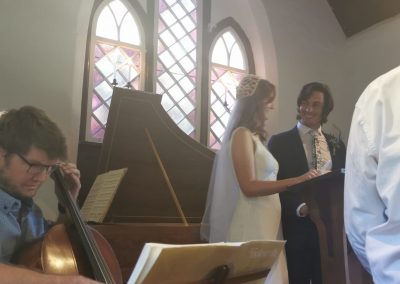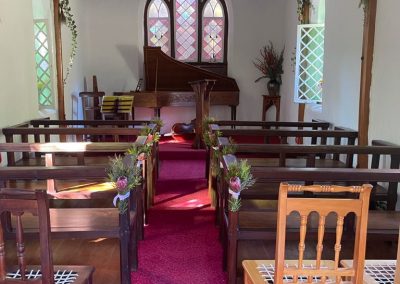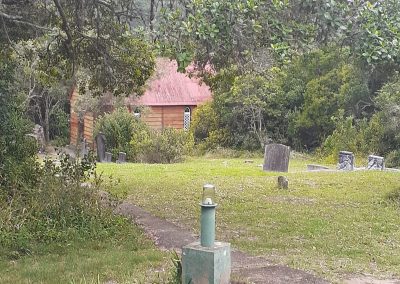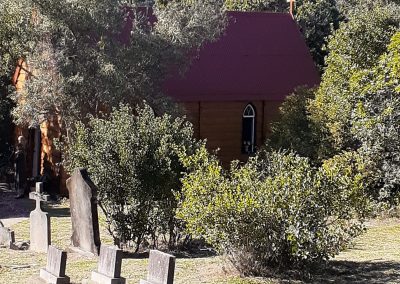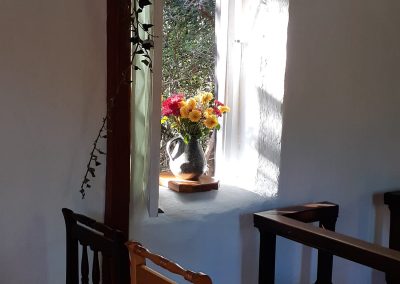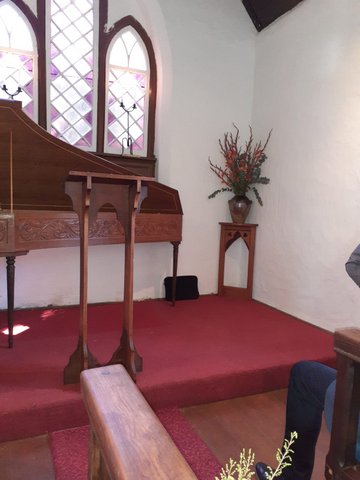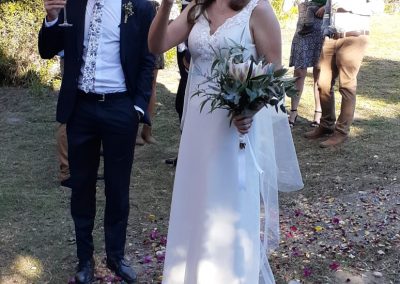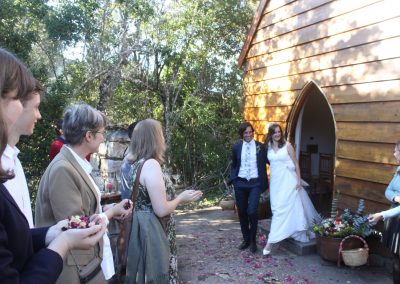St. Andrew's - Piesang Valley
As he walked by the Sea of Galilee, he saw two brothers, Simon, who is called Peter, and Andrew his brother, casting a net into the sea—for they were fishermen. And he said to them, “Follow me, and I will make you fish for people.” Immediately they left their nets and followed him. As he went from there, he saw two other brothers, James son of Zebedee and his brother John, in the boat with their father Zebedee, mending their nets, and he called them. Immediately they left the boat and their father, and followed him. (Mt 4:18-22)Welcome to St Andrew’s
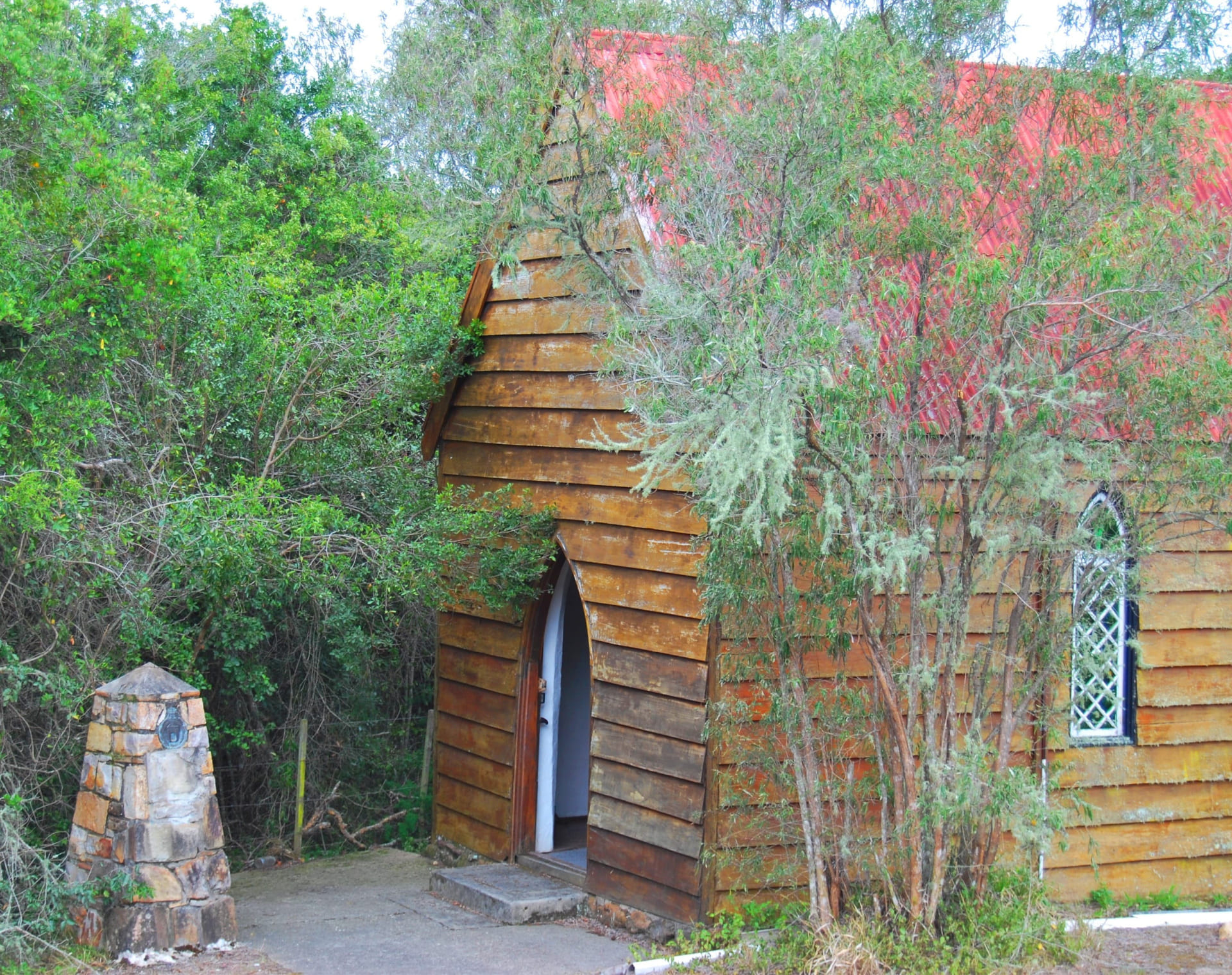 “Few places of worship in South Africa have a more fascinating history, than this little wooden church, the oldest church in the Parish of Knysna (some say, George). It was built during 1850/1851 by William Henry Newdigate to meet the spiritual and educational needs of his family and dependents.
“Few places of worship in South Africa have a more fascinating history, than this little wooden church, the oldest church in the Parish of Knysna (some say, George). It was built during 1850/1851 by William Henry Newdigate to meet the spiritual and educational needs of his family and dependents.
William Henry, third son of Francis Newdigate and Lady Barbara Maria, daughter of the third Earl of Dartmouth, was born in May 1824 at Astley Castle, his maternal grandfather’s seat. He was only 23 when he landed in South Africa and made his home in the green Piesang Valley. Within a short time, he owned five farms in this area – Buccleugh, on which he built his first home, Redbourne, Ladywood, Astley and Jackal’s Kraal.
Having grown up at Arbury Hall, Nuneaton, Warwickshire, the gracious ancestral estate of the Newdigate family, of which the beautiful chapel was the heart and vital centre, he felt acutely, in his first few years at Plettenberg Bay, the need of spiritual substance and organized worship. Encouraged by the renowned Robert Gray, first Bishop of Cape Town and Metropolitan of the Church of the Province, during the bishop’s first visitation of 1848, William wrote to his father outlining his plans for the building of a temporary, and eventually a permanent church.
Francis Newdigate immediately organised in England an appeal for funds to cover building costs, William’s grandfather the Earl of Dartmouth, headed the subscription list, in which the names of no less than seven Newdigates appear, as well as those of the Bishop of Bath and Wells, Lady Stopford, Viscount Lewisham, Lady Hovenden and Admiral Baine. Altogether £1,000 was raised and this amount was handed over to Bishop Gray to be invested until it should be needed for the building of a permanent church, William having met the cost of the Redbourne church (of St Andrews) out of his own pocket. With the interest earned over roughly thirty years, this £1000 formed the nucleus of the funds with which St. Peter’s Church, Plettenberg Bay, was built in 1880.
William constructed the little St Andrew’s Church of yellowwood and stinkwood with the help of local labour and the services of skilled workmen, mostly from England. Among them; Charles and William Smith and John Noble (whose families have maintained a lasting connection with this little church to this day, many of them rest in the little graveyard attached to it).
Patricia points out there are some interesting entries in Newdigate’s Farm Journal of 1850, such as29 August:
Sent William Page and George Shaw to cut wood for temporary church in Scots-wood;
1 November: John Noble, William Starbuck and William Adworthy putting in church foundations’, and 27 November: The Bishop called and examined Temporary Church,’ indicate the progress of the work. The Bishop wrote in his own Visitation Journal of 1850: ‘As the funds for the erection of a stone church are not yet sufficient, Mr. Newdigate is building at his sole cost, a wooden church, which will serve for a few years; and when the church shall be built, can be afterwards used as a school. He has agreed to transfer it immediately to the See.’ (A See is the name for a bishopric – a district under a bishop’s control).
Bishop Gray, satisfied that the little edifice of St Andrew’s (already in use) was adequate for the needs of the congregation and the performance of Divine Services ‘according to the Ritual and Rubric of the Church of England,’ licensed the building for ecclesiastical purposes in 1855. The license was to ‘continue in force only until a proper Church shall be completed and consecrated.’
In 1851, the year in which the building of his church was completed, William Newdigate married 17-year old Caroline, eldest daughter of Captain Thomas Henry Duthie and Mrs. Caroline Duthie (née Rex), of Belvidere, Knysna. By 1855 they were living in their new home, Buccleuch, not far from this church, and had a small family. Bishop Gray and his wife stayed with them in 1855 when, on 30 September, the bishop consecrated the churchyard of St. Andrew’s and afterwards administered Holy Communion in the church to seventeen persons, of whom a half were Coloured. The Church has largely served the Coloured community of the Piesang Valley ever since. (Until St Mary’s was built in New Horizons a hundred years later.) The Reverend Charles Bull, an ordained deacon in 1851, acted for a while as curate of Plettenberg Bay (in which St. Andrew’s was then the only church), and Plettenberg Bay fell under the jurisdiction of Dr. William Andrews, first Rector of Knysna.”
Anyone who knows Plettenberg Bay well may wonder why the first church in the District of George was built there, lost in dense bush on a terrible gravel road where even now it is difficult to find. Looking at the town today it’s hard to believe that the Piesang River was indeed the first part of Plettenberg Bay to be populated. The first permanent resident was Cornelis Botha whose farm was situated where the Country Club is today. It was with him, that Baron Von Plettenberg stayed in 1778. Within a few years, there were five permanent farms in the valley.
It was also in 1778 that François Rene Duminy took out the first load of timber from what we today call, Central Beach, which led to the building of two of the oldest and most important historic buildings in the town: The Wood sheds, which were also barracks for the military and The Old Rectory as well as some homes for Coloured folk in ‘Plett Central’ the rest of the population lived in the Piesang River valley.


